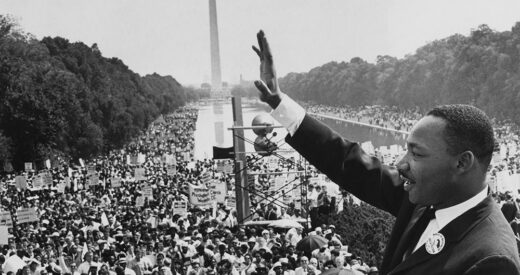This is the third part in a 3-part blog series. Read the first and second part.
Fresh from flunking out of college in the summer of 1992, I punched my ticket out of Mississippi as my family relocated to the Blue Ridge Mountains of North Carolina from my hometown of Jackson. The people and places of the Magnolia State had shaped me into the not-quite-yet mature man I had become by age 20. These people and places had brought out some of my worst instincts, but just before I left, they were also giving me hope that we could all be better to each other.
I left Mississippi with a lot of guilt over my self-destructive tendencies (see: flunking out of college, losing full academic scholarship). I was finding that I just didn’t like myself very much. This wilderness period I’d entered into was a time to wipe the slate clean: a time to figure out how to be the person that I wanted to be, not someone who conformed to others’ expectations or pre-set narratives for White boys who finished at the top of their high school classes.
I needed to figure out what my life would become, on my own terms, without destroying myself.
So, I found myself living just south of Asheville, North Carolina, nearly 600 miles from the safety and structure of the only home I’d ever known. Asheville was certainly an anomaly in Southern culture, at that time and still today. Shortly after we arrived, someone shared with me that Asheville, like San Francisco, Atlanta, and other communities around the country, was a haven for the gay community.
While I was beginning to unravel my deep-seated racism and arrive at a more compassionate place in that regard, my homophobia was still unabated. Where I came from, and at that time, the closet was a place not just for individuals but for an entire community. I didn’t grow up in a rural nook, by the way, but a capital city with more than 200,000 residents.
Yet, the only openly-gay person I knew of was longtime gay rights activist Eddie Sandifer. We all surely had LGBTQ+ people in our lives, but our across-the-street neighbor was referred to as “effeminate,” while others were simply regarded as something akin to asexual. After all, in order for the “community closet” concept to work, you can’t simply let people live without labels or speculation about their sexual orientation.
Asheville was certainly different. Almost immediately upon landing in this foreign place, still tucked into the southeastern United States, I observed, met, and became friends with men and women who were living “out” lives and had come to Asheville to do precisely that.
I soon became aware of and frequented many gay-owned businesses. I had gone from a place that, like most, had a closet large enough to fit most of its LGBTQ+ population and landed in a place that was letting its rainbow flag fly. There were gay-owned bars, clubs, coffee shops, restaurants, bookstores, retail boutiques, law firms, art galleries, and more. Turns out, my anecdotal perceptions were real; the next census after my arrival showed that Asheville had 83 percent more LGBT-identified people than the typical American city or town.
While I was open-minded enough to enjoy all of the commercial and cultural amenities provided by Asheville’s openly-gay community, I still operated with quite a bit of fear as an individual. But, much as Mary and Paul had started me on a journey of racial awakening, a coworker named Stephen, the first of many LBGTQ+ colleagues I would have in my now-long career, helped me to navigate my homophobia as a 20-year-old.
Stephen and I were among the first crew hired to open a brand-new location for one of the South’s top department stores, Dillard’s, at the Biltmore Square Mall location. On a personal level, Stephen was the first friend I’d had who openly spoke about a same-sex relationship. He even referred to Michael as his husband, not the more commonly heard, at the time, “roommate” or “partner.”
I was intrigued that, despite all stereotypes I had ascribed to at this point in my life, Stephen lived in a monogamous relationship with his husband in a rural retreat they had purchased on the outskirts of town after arriving from New York City. Stephen wasn’t fabulous by any stretch — his life was quite boring, and to my understanding at the time, just “normal.”
After the blur of the grand opening, the first days of working in a brand-new department store are long and tedious. Stephen and I kept busy and passed the time more quickly by attending to the merchandising of apparel and shoes in the men’s department, rather than leaning against the clothing racks and shooting the breeze all day. As we went about our work, we’d talk about our aspirations, as no one actually liked working at the store. I had very few aspirations of my own, but Stephen aspired to commercial success as an artist.
He shared with me many times about his fascination with light, and how his current work focused on creating ceramic lamps that projected light in many different patterns. He called them egg lamps, and he crafted these oval lights in sizes ranging from several inches to several feet tall. His home, he said, was covered in them, often to Michael’s displeasure.
One day, as we were having the latest iteration of this conversation, he insisted that I come to their home and see the lamps for myself. My thoughts immediately went from lamps to a jumble of notions and emotions. Could I really do that? Just go to a gay couple’s home? Would they try to kiss me or have sex with me? The mind moves to some pretty irrational spaces when confronted with new information sometimes, and mine is no exception, it seems.
Yet, I agreed to head over to Stephen and Michael’s getaway in rural Bat Cave, North Carolina to check out Stephen’s egg lamps on a Sunday afternoon when we were both off work. I drove very slowly to their house, and about every 45 seconds, I thought about turning around and making up an excuse for why I never arrived. Eventually, I pulled in their driveway though hoping that I wasn’t visibly shaking as I walked in.
Within a minute or two, I felt silly and embarrassed of those feelings. Stephen and Michael welcomed me as anyone else would welcome a friend into their home, and to this day, it’s one of the more visually-interesting homes I’ve ever seen.
Stephen had undersold how imaginative his lamps were. Perhaps he was being humble, or perhaps he didn’t understand how special his understanding of light really was. Regardless, he was gone a month later, hired away by a home decor company in New York. He’d punched a ticket of his own, from the doldrums of retail to the life of a Big Apple designer.
All told, Stephen was in my life for about two months in total. Looking back, it’s amazing the impact he had on me, first in the friendship we formed, and of course through the simple invitation to share a Sunday afternoon at his home.
Awakening is often about exposure to light, both in the figurative and literal sense. In this more figurative sense, Stephen shed light first on my heart, newly-opened to different experiences, and then on my fears, still very deep-seated and real. This wouldn’t be the last time I had to face up to fear and welcome new people into my life, but it got easier from here on out.
Thank you, Stephen. And Michael, too. I hope you’re somewhere, alive and well, being boring and “normal,” now that I understand how virtually none of us qualify with regard to that second adjective.
Brian Castle is the Founder & CEO of Parklife Communications, a full-service content shop serving small and mid-sized companies and larger agencies with a digital marketing focus. Brian is passionate about collaborating with executives and entrepreneurs to help tell their stories to effect positive change.






